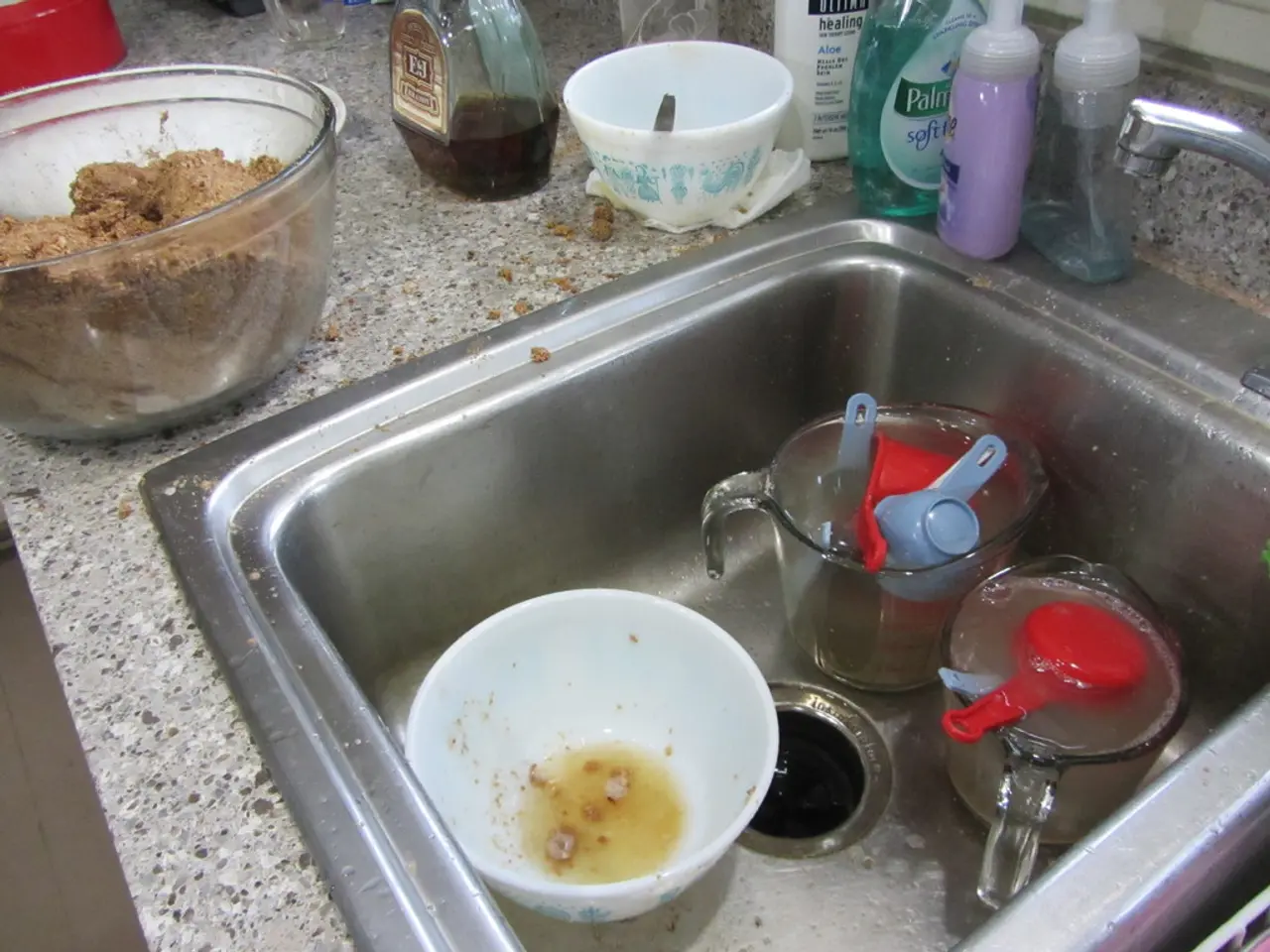Workplace Health and Safety: A Comprehensive, Science-Driven Approach to Avoiding Harmful Substances and Maintaining a Clean, Healthy Environment for Employees
In the pursuit of a safer and healthier work environment, industrial hygiene plays a pivotal role. This discipline focuses on identifying, evaluating, and controlling workplace hazards to protect workers' health and well-being.
A culture of safety is essential for success in industrial hygiene, necessitating proactive approaches, consistent sanitization practices, and adherence to regulatory standards. Medical surveillance programs are implemented to track workers' health, with baseline physical examinations, annual audiometric testing, spirometry tests, blood lead monitoring, skin examinations, vision screening, chest X-rays, and regular examination frequencies based on worker category.
Exposure monitoring is another crucial aspect, involving the collection of data on workplace contaminants using direct-reading aerosol monitors, colorimetric detector tubes, dosimeters, film badges, and wet-bulb globe thermometers. Sampling frequencies for exposure monitoring vary, with monthly checks for respirable dust, quarterly for organic vapors, semi-annually for noise, and monthly for radiation exposure.
The three-tier cleaning system, consisting of daily, weekly, and monthly sanitization tasks, is implemented to maintain a clean and hygienic workspace. Daily tasks include sanitizing high-touch surfaces, cleaning workstations, emptying waste bins, mopping floors, and cleaning restroom facilities. Weekly protocols include deep cleaning of ventilation grills, sanitizing walls, descaling water fixtures, steam cleaning fabric surfaces, and disinfecting storage areas.
Industrial hygienists follow a well-established hierarchy when implementing control methods for preventing workplace hazards. The hierarchy, ranked by effectiveness, includes elimination, engineering controls, administrative controls, and personal protective equipment (PPE).
Elimination, the most effective method, involves completely removing the hazard from the workplace. Engineering controls, which physically modify equipment, processes, or the environment to reduce exposure, are highly effective. Administrative controls, such as hazard recognition training, scheduling, or procedural changes to limit exposure time, help reduce risk but depend on adherence, making their reliability moderate. PPE is the final barrier, intended to protect workers directly from hazards, but it is least effective as a standalone method.
OSHA standards include permissible exposure limits (PELs) for over 500 hazardous substances, required monitoring frequencies, and documentation requirements for air contaminants, noise exposure, respiratory protection, and chemical hazards. Different sectors follow additional regulatory requirements based on their unique hazards, such as the CDC, Joint Commission for healthcare, NIOSH, EPA for manufacturing, ANSI, ASTM for construction, MSHA for mining, Good Manufacturing Practices (GMP), Hazard Analysis Critical Control Points (HACCP), Clean Room Classification standards, EPA emissions guidelines, and FDA sanitation protocols.
Indoor air quality management requires HEPA filters, CO2 monitors, humidity sensors, particulate counters, MERV-13 or higher rated filtration systems, positive air pressure in clean areas, regular filter replacement schedules, UV-C air purification systems, and monitoring ventilation rates.
Key compliance elements include maintaining exposure records for 30 years, implementing medical surveillance programs, conducting regular workplace inspections, providing appropriate PPE certification, recording incident reports within 24 hours, and adhering to industry-specific guidelines.
By coupling multiple control methods following the hierarchy, workplaces can maximize hazard prevention and worker protection, ensuring a safer and healthier environment for all.
Quality management in health-and-wellness enhances productivity by incorporating strategies that optimize the industrial hygiene program. This could involve implementing a three-tier cleaning system or adhering to OSHA standards, focusing on exposure limits, air quality management, and personal protective equipment (PPE).
The implementation of such measures aligns with the science of industrial hygiene, as the goal is to eliminate or control workplace hazards, ultimately promoting a safer and healthier work environment.




